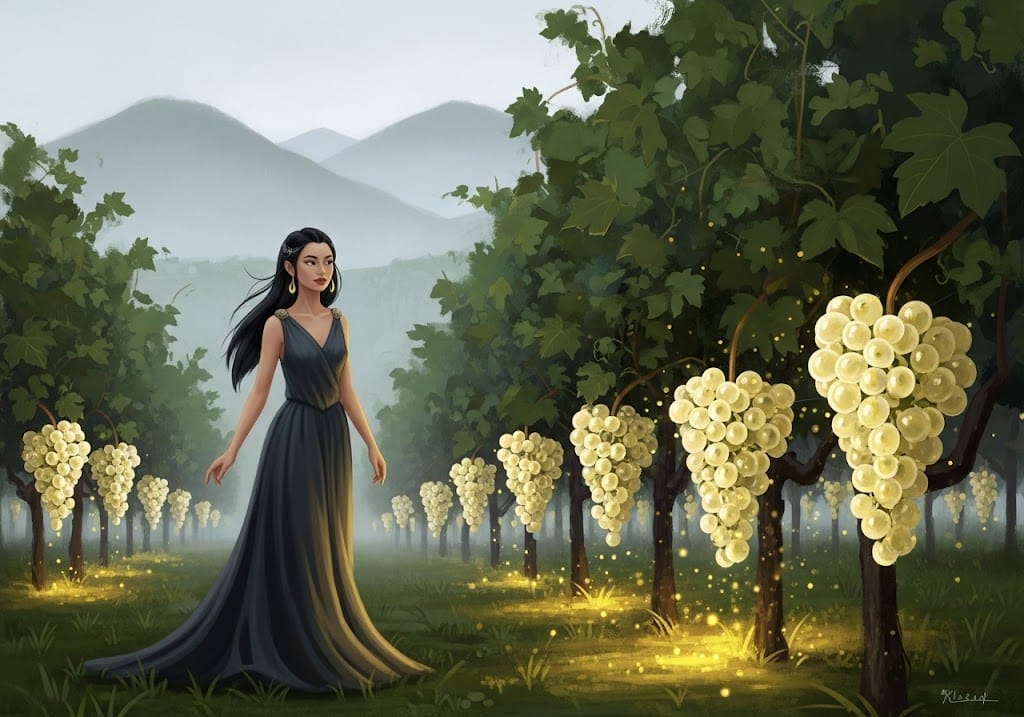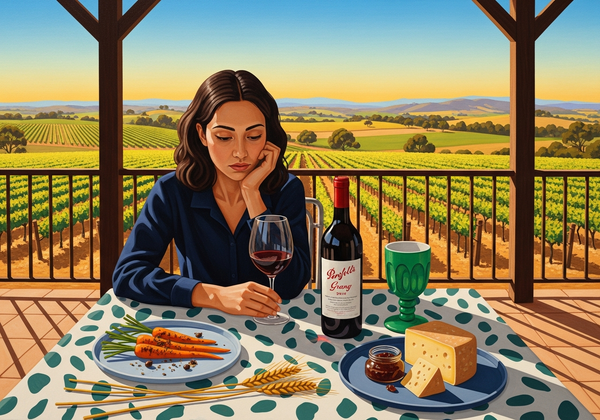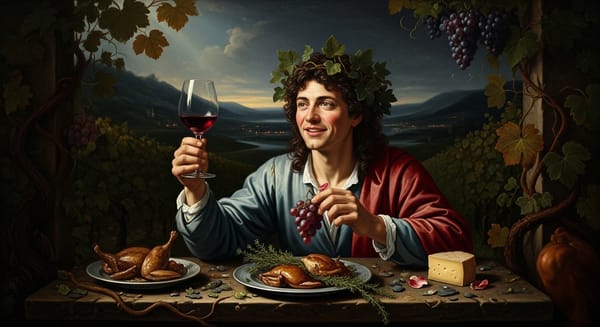Rain Light, Fir Shadows: Learning the Lines of Oregon’s Willamette Valley
Willamette Valley wine guide: Pinot Noir & Chardonnay shaped by Van Duzer winds and Jory, Laurelwood, Willakenzie soils. Explore key sub-AVAs, standout estates, serving tips, and how patience—not hype—unlocks the region’s quiet power.

A coastal-wind lesson in Pinot, Chardonnay, and the patience that weather teaches
Three-Sentence Hook
Evening slides through fir branches and the wind carries a clean edge from the Van Duzer Corridor, as if someone opened a cool room in the middle of summer. Red clay clings to bootlaces; somewhere a barn door knocks twice and stops, listening. In the glass, Willamette translates maritime light into a fine line—fruit that speaks softly, structure that remembers the hills.
From Pioneers to Present (History)
Before Pinot found its cadence here, the valley was a patchwork of orchards, grain, and possibility. A handful of families trusted a hunch that cool air and long autumns could cradle grapes usually expected to cross the Atlantic to be considered serious. In the late 1960s and early 1970s, names that now sound like landmarks—Lett, Erath, Adelsheim, Ponzi—arrived with borrowed equipment, hand‑drawn maps, and the stubbornness to plant vineyards where frost still told the calendar what to do. Fermenters lived in garages; bottling days felt like community potlucks with corks.
Recognition came in flickers—an international tasting result here, a visiting Burgundian’s raised eyebrow there—until the story cohered: the valley could make Pinot Noir that read as both place and promise. In time, Burgundy did more than nod; it invested. Domaine Drouhin Oregon set deep roots on a Dundee Hills slope; later, other houses would follow with their own interpretations. The state map began to fill with nested names as the community learned to describe itself—Chehalem Mountains, Dundee Hills, Eola–Amity Hills, Ribbon Ridge, Yamhill‑Carlton, McMinnville, and more—each a paragraph in a growing book.
Today, the narrative is refinement rather than revolution. Vineyards are older; vine material is wiser; the conversation includes Chardonnay with a new confidence and traditional‑method sparkling with intent. Tools have improved, but the posture remains human‑scaled: people who learn the valleys by mist and mud, who trust that patience is a technique. The loudest noise is still the wind.
U.S. AVA Primer (Clarity Over Bureaucracy)
America’s AVA system answers a simple question—where were these grapes grown? It draws boundaries based on geography and climate; it does not rank quality or dictate recipes. A label may name “Willamette Valley,” a nested sub‑AVA like “Dundee Hills,” or a vineyard such as “Seven Springs.” Today the valley shelters eleven nested AVAs, each keeping its own cadence. To the drinker, these are coordinates rather than trophies—a way to come back to a flavor that felt like home.
Terroir Unwrapped: Wind, Rain Shadow, and Three Great Soils
Stand on a ridge at dawn and the place explains itself. The Coast Range catches ocean weather and throws a rain shadow across rolling foothills; the Van Duzer Corridor—a low gap to the west—funnels afternoon wind that snaps flags to attention and tightens clusters after warm days. Nights cool quickly. The valley’s pulse is contrast, and vines learn to write in that script.
Beneath your boots, three broad soil families set the tone:
- Volcanic Basalt (Jory and kin). Iron‑rich red clays in places like Dundee Hills glow after rain. Pinot here often carries red‑fruit clarity—cherry, cranberry, sometimes pomegranate—with tannins that feel like fine fabric rather than cord. Chardonnay from these slopes can mint lemon pith and hazelnut over a wet‑stone line.
- Marine Sedimentary (Willakenzie, others). Ancient seafloor uplifted into hills around Yamhill‑Carlton and Ribbon Ridge: brown‑gold, well‑drained, with pebbles that remember shells. The wines skew darker in tone—black raspberry, blue plum—with a savory undercurrent (bay leaf, cocoa nib) and tannins that read as faintly sandy.
- Windblown Loess (Laurelwood over basalt). On parts of the Chehalem Mountains and beyond, a silt cap catches light breezes and holds spring warmth. Pinots here may present violet, rose, and spice on red fruit, with a lifted, almost aerial feel.
Add elevation, aspect, and proximity to the wind corridor, and you have a mosaic that argues against one‑note descriptions. The best bottles taste like paragraphs with margin notes.
Grapes & Styles: Pinots with Edges, Chardonnay with Nerve
Pinot Noir is the valley’s common language, but dialects matter. In cooler pockets or wind‑brushed sites, the wines travel on a thread of acidity that keeps red fruit vertical; stems (if used) add tea leaves, clove, and a line of woodland. In warmer niches, texture grows more generous—darker fruit, a hint of cocoa, balsam, sometimes a brush of cedar from oak that knows how to step back. Tannins rarely shout; they suggest.
Chardonnay has shifted from apology to argument. Dijon clones, careful canopy, and patience in the press yield wines built on citrus pith, pear skin, and saline rather than butter and heat. Fermentation in seasoned barrels or large oak, partial malolactic, and long lees contact can trade in delicacy without erasing nerve. The goal is tension you can drink.
Pinot Gris carries a legacy as the valley’s friendly handshake—pear, melon, white flowers, a soft mid‑palate—though many producers now aim for drier cuts and lees texture. Gamay gleams with cranberry snap and pepper; Riesling skates between lime blossom and slate; traditional‑method sparkling is no longer a novelty. Across styles, the through‑line is freshness, not austerity—wines that leave room for dinner.
General tasting cues? Think red cherry, wild strawberry, cranberry, rose petal, white tea, and forest floor for Pinot Noir; lemon peel, green apple, hazelnut, and wet stone for Chardonnay. Oak shows up as frame, not portrait.
Serving & Cellaring Tips (Practical, Poetic)
Pinot shows best where the glass fogs but doesn’t shiver—about 55–60 °F (13–16 °C). A gentle decant (20–30 minutes) helps young wines unknot. Older bottles prefer quiet handling—stand them upright a day, then pour with a patient hand. Glasses with tulip rims sharpen aromas without magnifying alcohol. Chardonnay wakes with a clear voice at 50–55 °F (10–13 °C)—cool, not cold.
Food speaks the local language: cedar‑plank salmon, roast chicken with lemon and thyme, farro with chanterelles, duck breast with cherry jus, grilled leeks, hazelnuts everywhere. Pinots with whole‑cluster spice adore charred edges; Chardonnays with mineral drive love shellfish and anything finished with good butter.
Aging windows depend on site and maker. Many Willamette Pinots sweeten into harmony between 6–10 years; structured single‑vineyard and reserve bottlings can hum well beyond that. Top Chardonnays reward 4–8 years with added texture and honeyed echo. As always, the right time is the night you have people who will listen.
Winemaking Philosophy: Site Over Recipe
The valley’s most telling decisions feel less like doctrine and more like attention. Canopy is lifted for breeze, dropped for shade; pick dates aim for seeds that crunch rather than squish. Whole‑cluster is a lever, not a logo—turned up when stems are lignified and the site wants floral lift; turned down when fruit already carries spice. Native ferments are common; extraction tends to be polite, favoring pump‑overs or gentle punch‑downs that keep grip from turning to grit.
Oak is frame, not portrait—mostly French, measured, there to steady the line rather than scent the room. Extended élevage smooths edges without sanding away detail. Organics and biodynamics are widespread, not as marketing but as a way to farm soil for the next generation. In warmer years, shade cloth and earlier harvests protect line; in smoky ones, sorting and shorter skin contact preserve fruit. The tone is steady: intervention when necessary, restraint when wise.
Sub‑AVAs, Estates & Rising Voices: A Twilight Circuit
I begin where red clay stains my cuffs and the light goes copper. The road lifts into the Dundee Hills, and the air smells of wet terra‑cotta and cherry skins. At Eyrie, restraint feels deliberate, like a conversation held at a round table; the wine moves with sap and patience. Up the slope, Domaine Drouhin Oregon speaks Burgundy in Oregon’s cadence—sentences precise but never severe. A little farther, White Rose lets stems write in cursive—tea leaf and rose drifting in the margins—while Domaine Serene keeps its rooms in order, Chardonnay walking a straight line that still somehow smiles.
Wind arrives as I cross into the Eola–Amity Hills, that corridor snapping flags to attention. Vines lean and then recover; the wines do the same. At Cristom the vineyards are addressed by name, their voices distinct as siblings at a family reunion. Bethel Heights answers with a steadier timbre—savory and composed—while Walter Scott draws chalk lines with Chardonnay and then colors inside them with citrus and nerve. A ridge away, Seven Springs carries the scent of fir shade even when the sun is out.
The lane narrows to a ribbon of dust—Ribbon Ridge—a raised finger of ancient sea floor. Here, Beaux Frères hushes the forest so darker fruit can speak; tannins arrive like good manners. Patricia Green coaxes a different accent from nearby blocks, each bottling a small dialect lesson: same hill, new inflection.
I drop into Yamhill‑Carlton, where marine sands and silts sift through my boots. Shea feels like a reference point you keep returning to—black raspberry, cocoa nib, an ease that comes from knowing itself. WillaKenzie shades blue and savory, its grip more suede than velvet, a handshake that means to linger.
On the Chehalem Mountains, and within its nested Laurelwood District (approved 2020), the light thins and Laurelwood loess settles on my cuffs. Adelsheim moves like a careful historian, noting details others pass. 00 Wines threads tension through Chardonnay with a watchmaker’s focus, while REX HILL dresses red fruit in spice and keeps the edges clean. Far off, porch lights wink on and the valley starts to speak under its breath.
The road bends toward McMinnville, where basalt shoulders push up against the sky. At Maysara, biodynamics reads as practice rather than sermon; earth‑toned fruit carries a slow, steady arc, the kind that rewards listeners.
Last, the Van Duzer Corridor opens like a door left ajar. Air rushes through; vines seem to breathe out. Johan hums with life—savory lines, textural whites—while Van Duzer Vineyards sketches savory reds that taste of dusk and sea‑cooled stone. I stand in the cooling wind and think how each district taught the same lesson differently: site over recipe, patience over display, a valley that prefers to invite rather than insist.
Investment Lens (Philosophical Musings)
Scarcity in the Willamette is not manufactured; it is the result of small parcels and seasons that still act like seasons. Single‑vineyard bottlings function as time capsules, each vintage an entry in a weather diary written by vines and hands. Some labels gather gravity on allocation lists; a few names travel quickly across auction lots. Yet the more interesting arithmetic measures evenings rather than indices: how a bottle rearranges talk, how the second glass seems to widen the room.
Burgundy’s deepening ties hint at long arcs; sparkling projects suggest patience in decades, not releases. But the truest return comes when a year you thought you had forgotten rises from a glass with cedar, rain, and the after‑scent of fir needles on warm asphalt. Invest, if by that you mean placing attention where it ripens.
Closing Reflection: After the Wind
Dusk leans into night and the corridor quiets. Vines breathe out; owls take the first watch. I walk the last row until my fingers brush the end post, sticky with sap where someone tightened wire before harvest. The valley keeps its own counsel—patient, wind‑literate, steady. In the bowl of the glass, red fruit glows like coals under ash, and a line of acidity holds the shape of the day. Some places insist; this one invites.





